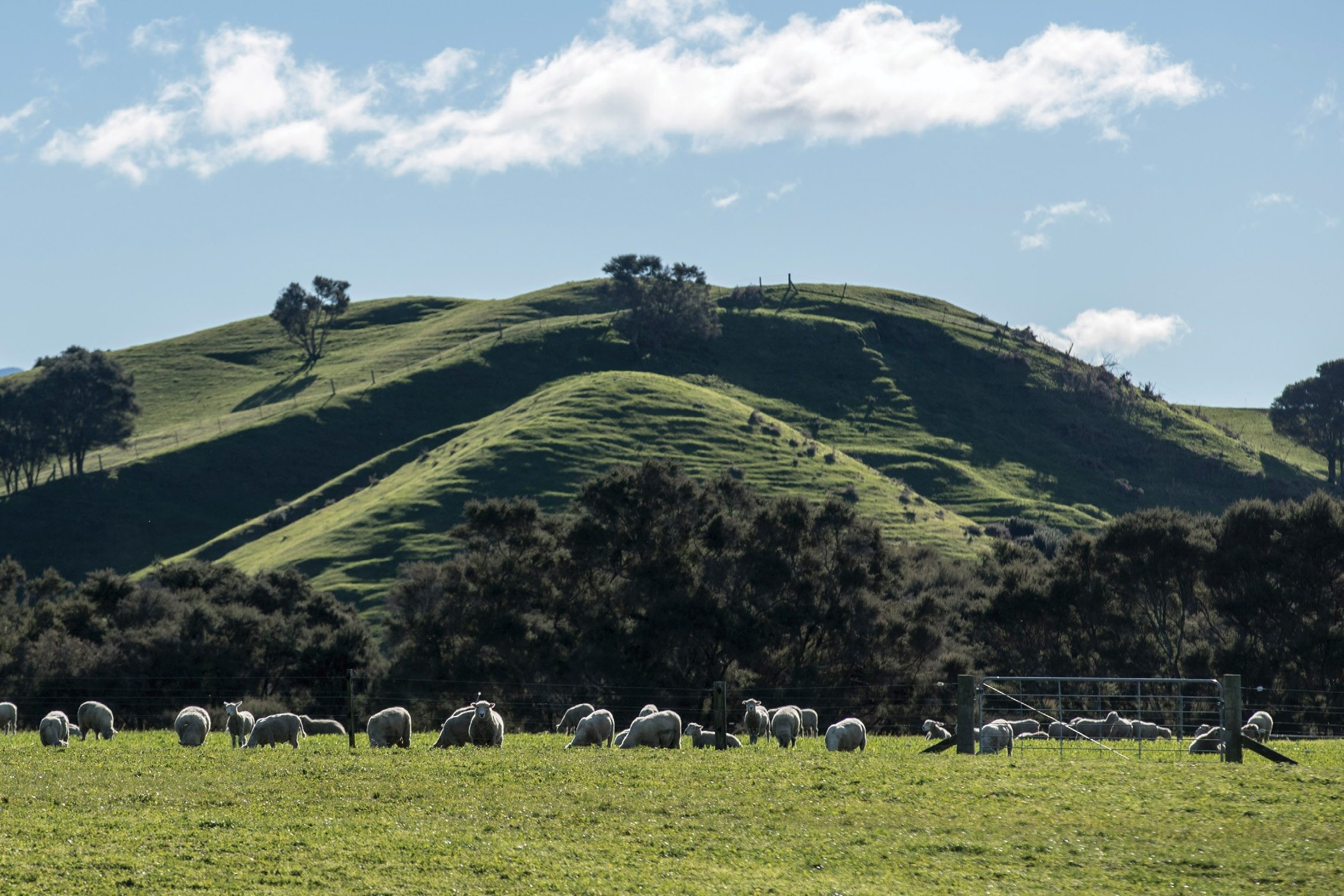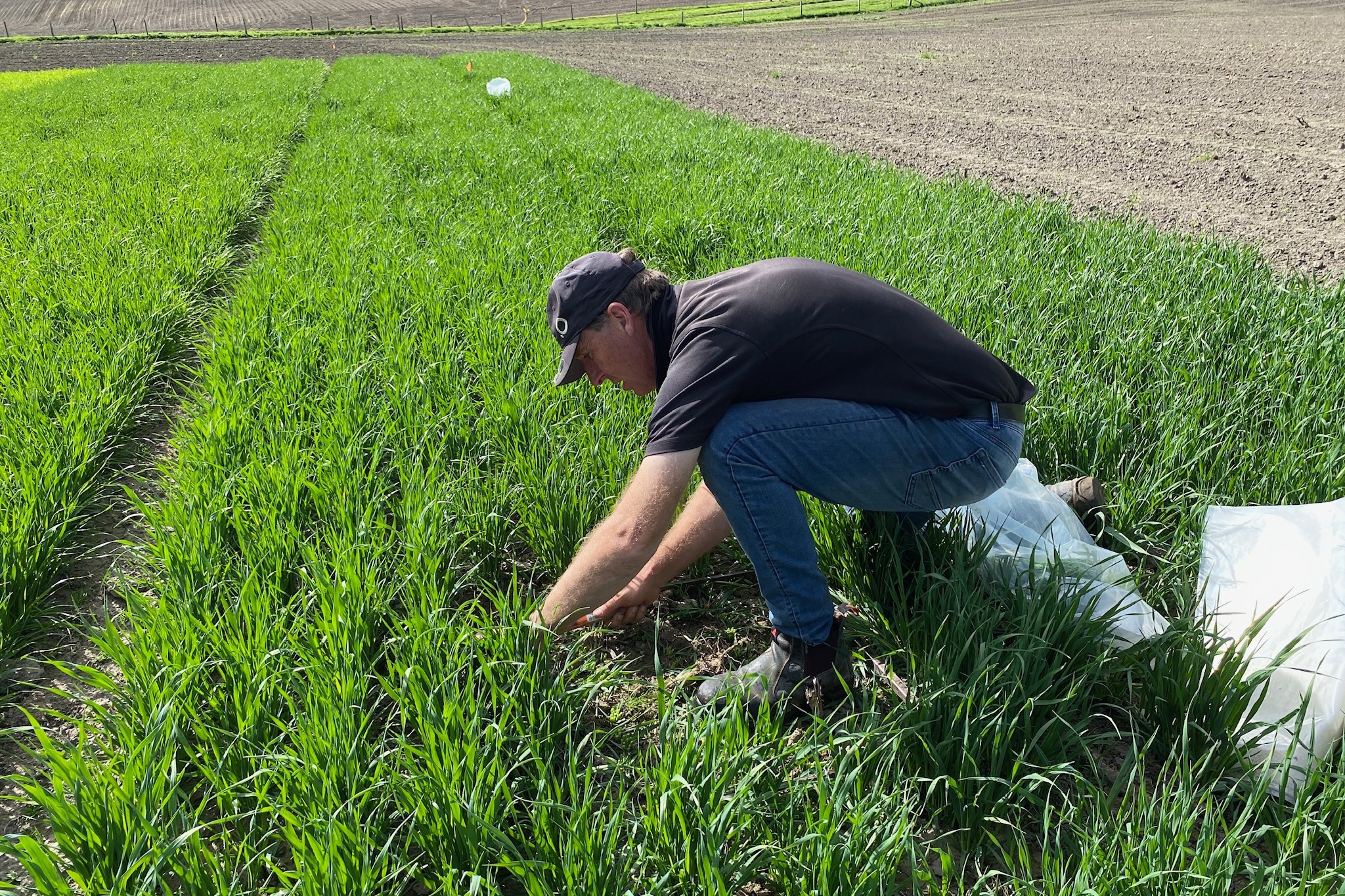N DRIVES PRODUCTION AND LOWERS CO2
By Jo Cuttance

Feeding the growing world population is a choice between an increase in area of farm land or intensification of existing areas, Lincoln University agronomy professor Derrick Moot says.
Moot said New Zealand started to increase its use of fertiliser from the 1990s. When urea became available in the 1960s, NZ was not really a user of nitrogen fertiliser.
On the Canterbury Plains were mixed cropping systems, which were rotated with a white clover seed crop, which might be followed with a wheat crop, then it could be a barley crop, then it might go into pastures for the next two or three years. This mixed cropping system did not use much nitrogen fertiliser. The nitrogen came from red clover or white clover seed crops.
The increased use in nitrogen fertiliser coincided with the development of central pivot irrigation which enabled the conversion to dairy farming. One issue associated with application of nitrogen fertiliser was the loss of nitrous oxide, one of the greenhouse gases. Now the Government has limited how much nitrogen fertiliser could be used, as they tried to deal with the issue of NZ’s contribution to climate change from agriculture.
The idea was to reduce inputs into the sector, and one tool was to reduce the amount of nitrogen fertiliser farmers could use. This would eventually lead to a reduction in stocking rate on the Canterbury Plains, which would then feedback into the amount of methane produced.
Moot has researched the effects of nitrogen for decades. During the 1990s, after returning from a sabbatical in Europe where he looked at climate change and the impact for European agriculture, Moot noticed a large amount of land on the Canterbury Plains was being converted into dairy farming.
He began an experiment which looked into the impact from taking an area which was summer dry, to adding just irrigation, the impact of adding irrigation and nitrogen, and of adding only nitrogen to a pasture which received no moisture.
Moot was most intrigued with the pastures which only had nitrogen put on, the ones which were not irrigated. He found when there was more nitrogen in the system it increased pasture production from 6.3 tonnes to 16t DM/ha. The scientists found they were dealing with what was limiting production on the plains.
Moot said if he asked most people to suggest in the summer prior to irrigation, what was the most limiting factor on the plains, most would have said moisture. But it was nitrogen. In essence, it was because with the exception of legumes, all plants are nitrogen-deficient all of the time. This meant nitrogen was the most limiting nutrient regardless of what was being grown, unless it was a legume. Legume yields were affected by the fact that they fixed nitrogen and the plant had to use about 20% of the carbon that it photosynthesized in a day for the nitrogen fixation process, so legume crops would never yield as much as cereal crops.
The ability to increase the production of plants by getting nitrogen into dryland systems generated further research.
The Hill Country Futures experiment on a drylands system on Banks Peninsula compared unimproved versus improved pasture production. The resident pasture verses lucerne as the improved component.
What they saw over the past two years was the unimproved system produced about 5.4t, and most of that was in spring before it ran out in the autumn. The lucerne produced more than three times that amount of feed, essentially because lucerne was never nitrogen deficient. Because of nitrogen fixation it could utilise the spring moisture which was the only moisture readily available. Not only was there a big difference in the amount of feed but also in the timing of feed.
Moot said in NZ sheep and beef systems the main feed demand was in the spring. With lactating ewes with lambs, there were a lot of mouths to feed. The lucerne produced more feed in that early spring period then the resident pasture.
“It is producing feed at a time when onfarm demand for feed is actually increasing quite dramatically.”
NZ has developed farming systems that utilised lucerne directly in this feed situation. Having high-quality feed as a direct intake meant animals grew quickly which resulted in a reduced methane output.
A lot of people were doing a lot of work to reduce methane production from the agricultural sector in NZ, to date most of those had not been successful or led to an onfarm application.
A lamb which was 25kg at weaning, needed to be 35kg and was growing at 100g/head/day, would take 100 days on the farm, consume 1300MJ of energy and produce 303g of methane per kilogram. But if it could be grown faster, at least 200g/head/day, then it would be on the farm for half the time and consume a lot less in total energy, so there was a reduction in its methane production.
Fast growth cuts methane
One way to reduce the carbon footprint of agricultural systems was to be more productive, Moot said.
The business of NZ pastoral farming was growing animals as rapidly as possible and getting them off farm. This was particularly important in the Drylands Pastures Research systems that Moot had been working with because they ran out of water. If there were still animals on the farm and there was no feed, then feed needed to be brought in.
Less feed, more methane
With less feed animals grew more slowly so their methane production for a kilogram of liveweight gain was a lot more. Intensifying the spring production had been the main aspect Moot and his team of scientists had used to reduce methane production. They tried to be sympathetic with the environment by having a deep-rooted plant like lucerne in the areas where there were some deep soils, and tried to maintain soil cover or ground cover in areas where there were shallow soils over the steeper faces. The reason there was more soil in the valley was because it had fallen off the hills.
“Erosion is a natural process that we can’t stop but we can reduce the rate at which it occurs but over thousands of years we will find that gravity will bring silt to the valleys.”
At the Bonavaree farm site they had taken advantage of this intensification by planting the deep-rooted lucerne in the valley. They fenced off and planted the shallow faces with not much topsoil and retired these areas into trees.
Moot said one of the things that had happened in the NZ sheep and beef sector had been a move to planting areas which were not very productive in a pastoral sense into woody vegetation. Depending on who you asked, that offset was between 63 or 118% (Case & Ryan 2020) of the total emissions coming out of the sheep and beef sector.
Over time in the NZ sheep industry CO2 emissions from livestock had been offset by retiring land into either native or exotic plantings. There had been a reduction in NZ sheep numbers from about 60 million in the 1990s to just under 30m now, and therefore also a drop in the number of lambs marketed.
What was often overlooked in these figures was the increase in productivity that had occurred. Some of that was from intensification, from increased genetics, but also from feeding those animals. This had raised the lambing percentage from about 100% on average to 130%. At the same time the carcaseweight of those animals was increasing from around 14.5 to 18kg per animal. What that had done was reduce the methane production, Moot said.
AgResearch research showed huge productivity changes had occurred in the sheep and beef sector, Moot said. This was the only sector in NZ which had actually reduced its greenhouse gas emissions or its environmental footprint to this extent.




